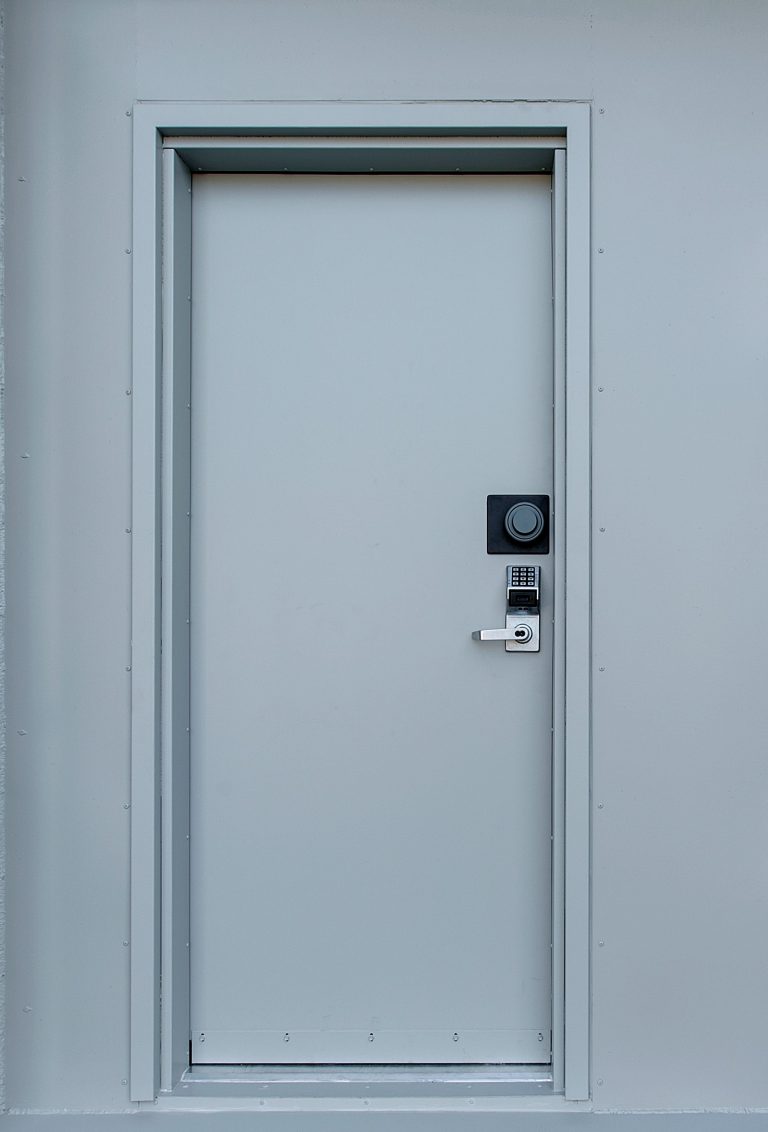Troubleshooting tips for an acoustic door that’s not performing
Acoustic doors, which are engineered to prevent a specific level of sound from transferring through (and are categorized according to a sound transmission class, or STC, test), are used for a variety of facilities, including music studios, hotels, schools and secure facilities (such as Sensitive Compartmented Information Facilities, or SCIFs, and Special Access Program Facilities, or SAPFs). Secure facilities commonly require a rating of STC 45 or 50 on its door assemblies, which means that if the assembly is not performing properly, the government might not accredit the facility.

Why Your Acoustic Door Isn’t Working
Unfortunately, as specialty doors, they have a somewhat high-maintenance nature, so a lot can go wrong. Here are the most likely reasons your door is not performing:
- Your complete door assembly was purchased from a hodgepodge of manufacturers. The No. 1 thing to remember when buying STC doors is that you need to purchase them as a rated assembly (also referred to as a “complete door kit” or “door in a box”). That means the door itself comes with a frame, acoustic seals, and hinges. You could even order it with the locking device, closer and other hardware as well. If you piece together a “Frankendoor” by purchasing your door leaf from one manufacturer, your frame from another and your door seals from a third, you might assume you’re covered if they’re all rated at STC 50. However, the STC 50 rating only applies to the doors being tested as a complete assembly, with those specific parts from the same manufacturer interacting together (i.e., the door closes correctly on the frame and the sound seals make proper contact against the door when the door’s in the closed position). Those types of interactions aren’t taken into consideration by the manufacturer of just the frame. Complete door kits are available from companies such as Lockmasters and Industrial Acoustic Company.
- The door wasn’t installed properly. Acoustic door assemblies should be installed by a trained installer to make sure they perform properly. If they’re not installed correctly, you will likely find sound seals installed incorrectly, missing acoustic insulation, a door that’s out of plumb or poorly installed hardware that prevents the door from closing and/or sealing properly.
- Your wall is not sound rated. If your door was purchased as a rated assembly and was installed correctly, then you might need to evaluate the wall that it’s sitting in. An STC-rated door in a non-STC-rated wall (or a wall with a lower STC value than you’re trying to achieve) gets you nowhere—your acoustic protection is only as good as the weakest link in your perimeter.
Steps for Fixing Your Acoustic Door
Some of the problems above are somewhat easily fixable, while others will require a significant amount of money and work. If your door doesn’t seem to be performing, here’s what we recommend you do:
Double-check your sourcing with your contractor. Make sure that all of the components of your door assembly have been tested and rated together as a complete assembly (as opposed to someone just buying individual items and making their own unique configuration) . Also ensure that the manufacturer of the door assembly specializes in acoustical doors and that its doors are field-performance-guaranteed and backed up with as ASTM E-90 report. If the door assembly was not sourced from a reliable manufacturer, unfortunately you’ll need to replace many of the components or the entire assembly. If, however, there were no problems with the sourcing, then it could have been an installation problem.
Evaluate the operation of the assembly. Before you get any kind of testing or assessment, you can visually inspect the operation of the door yourself. Check that the door is sealing properly by going outside, closing the door and ensuring you’re getting contact between the door and the sound seals on all four sides. If you’re not sure if the seals are making contact, you can conduct your own flashlight test—have someone stand on the inside of the door with a flashlight while you stand outside. Have them shine the light all the way around the edge of the door and see if any light comes through. If light comes through, then something was installed improperly or the door has moved or shifted over time. We would recommend that you check your door’s warranty to see if the door can be fixed by the manufacturer. Be aware, though, that poorly installed components can be damaged and will need to be replaced. If the warranty doesn’t apply, then you’ll need to hire an STC door expert to help you.
Get an assessment and acoustic test. If your sound seals don’t appear to have a problem, then you might need an expert to step in. You can pay to have an acoustic test performed, which would give you a field test rating (Noise Isolation Class, or NIC), as opposed to a lab test rating (STC), to confirm how much sound is passing through the door assembly. An assessment will provide you with what needs to be done in order to achieve the acoustic rating you’re looking for—whether that’s adjusting the sound seals, fixing the drop bottom, rehanging the door, or, worst-case scenario, needing to replace and install components.
No matter what problems you have with your acoustic doors, Adamo can help you assess and correct them, whether that involves repairing the doors, reinstalling them or determining the best sound mitigation options.




